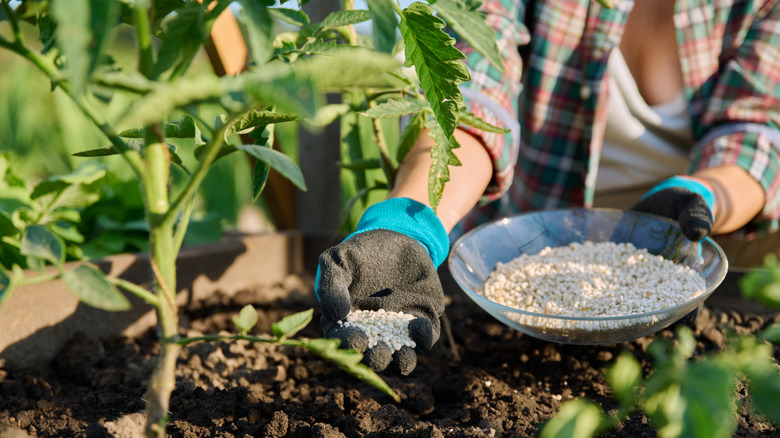The Lesser-Known Type Of Fertilizer That Can Break Up Chunky Clay Soil Like No Other
Clay soil presents a number of problems. It can easily become waterlogged and compacted. On the other hand, when it's dry, it's rock hard. Either way, it's difficult to dig and presents a barrier to root growth. It is usually rich in nutrients, and there are flowers and tasty veggies that will happily grow in clay soil, but many keen gardeners will go to great lengths to improve the structure.
There is a lesser-known type of fertilizer that can be particularly helpful and can break up clay soil like no other. It's called greensand (sometimes green sand). The main component is glauconite. Technically, it's a potassium, iron, aluminum silicate – a natural, sedimentary rock that was once under the ocean but was left behind millions of years ago when seas receded.
Greensand has a number of benefits. In addition to iron and potassium, it also contains magnesium and as many as two dozen other minerals and trace elements that can boost plant growth. It is great at loosening clay soil to improve drainage and allow more oxygen in. It promotes microbial activity and increases your soil's ability to retain nutrients. Some types of commercial fertilizers can be too strong, causing root burn in young plants, but greensand releases its goodness slowly, so that doesn't happen. It can be used in the garden, around fruit trees, in potting soil, and can even be added to compost.
The drawbacks of using greensand fertilizer
With such a long and glowing list of positives, you might wonder why greensand isn't more popular. Surely everyone should be using it? One reason they aren't is that the release of nutrients, and potassium in particular, is very slow. So slow that it might be ineffective, except in soils with high acidity. Also, the actual composition of commercially available greensand products can vary, and sand may be added. So in order to understand exactly what you're getting, it helps to know what the numbers on fertilizer really mean. It can also be quite expensive.
According to some experts, greensand contains potentially toxic heavy metals like lead, arsenic, and chromium. Those interested in climate-conscious gardening will want to think twice about introducing those to their soil. It is also argued that it's cheaper and equally effective simply to add compost, as organic material can also benefit clay soil.
There's no doubt that greensand fertilizer can break up clay soil, helping improve its structure and overall health. However, for most people, it probably won't be a single solution, particularly for those who are growing vegetables or fruit. The best approach for many will be to test the soil to see what nutrients it lacks. You can then decide exactly what to add that will do the soil and your plants the most good.

